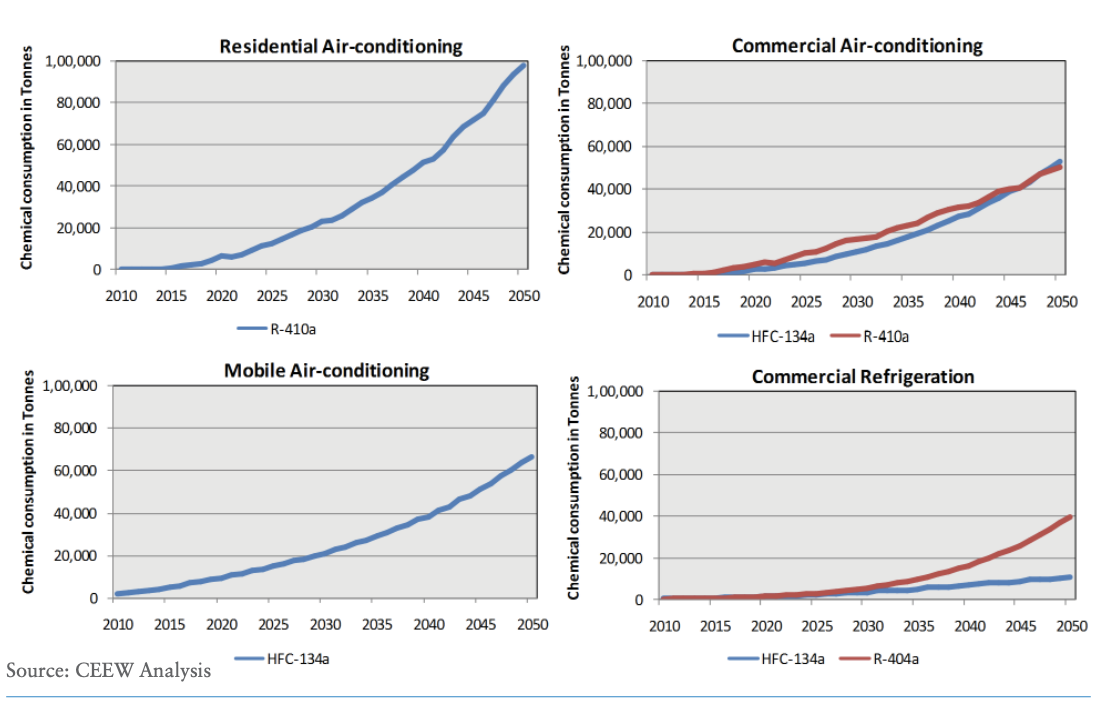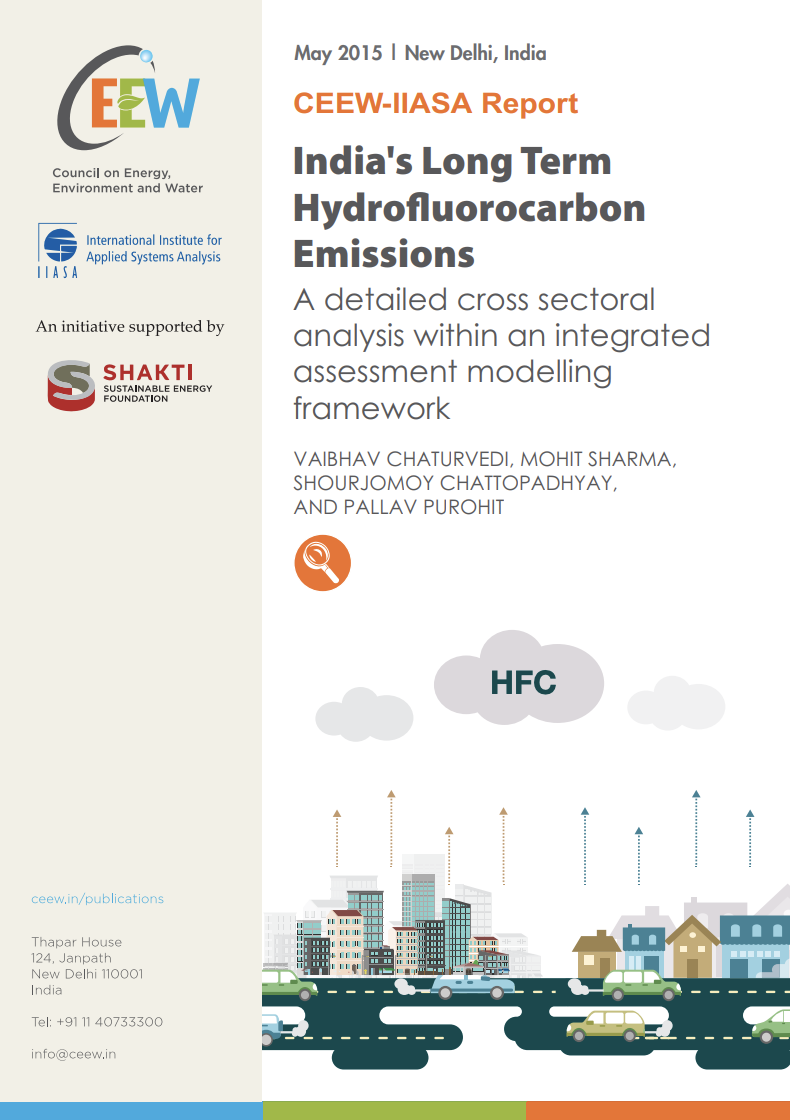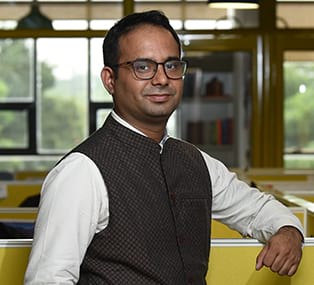Report
India’s Long-Term Hydrofluorocarbon Emissions
A detailed cross-sectoral analysis with an integrated assessment modelling framework
Vaibhav Chaturvedi, Mohit Sharma, Shourjomoy Chattopadhyay, Pallav Purohit
May 2015 |
Suggested Citation: Chaturvedi, Vaibhav, Mohit Sharma, Shourjomoy Chattopadhyay, and Pallav Purohit. 2015. India’s Long-Term Hydrofluorocarbon Emissions: A detailed cross-sectoral analysis within an integrated assessment modelling framework. New Delhi; Laxenburg: Council on Energy, Environment and Water and International Institute for Applied Systems Analysis
Overview
This report with the International Institute for Applied Systems Analysis (IIASA, Austria) and supported by Shakti Sustainable Energy Foundation focuses on the sectors expected to be large contributors to Indian hydrofluorocarbons (HFC) emissions. The analysis uses the framework of the Global Change Assessment Model (GCAM). It presents estimates of the long-term and future demand for HFCs across different sectors. Further, it analyses the implications of India’s amendment proposal to the Montreal Protocol.
Key Findings
- The increase in penetration of air-conditioners, refrigerators, and personal vehicles with economic growth will lead to higher HFCs' consumption and emission.
- If HFCs' consumption is not phased down, total HFC emissions will increase to 500 MtCO2-eq in 2050.
- Residential and commercial cooling sectors would take up the largest share of HFC emissions at (35 percent and 28 per cent, respectively), followed by mobile AC systems in cars (15 percent) and commercial refrigerators (14 percent).
Long Term HFC consumption for key sectors in India

- The share of the global warming impact of HFC emissions compared to carbon dioxide emissions in 2050 is highest for the commercial refrigeration sector at 50 per cent.
- HFCs will contribute 5.4 percent of India’s combined CO2 and HFC related global warming impact from 2050, an increase from 3.9 percent between 2015 and 2050.
- The share of India’s HFC emissions in the combined global warming impact of CO2 and HFC emissions will still be 5.5 percent in 2050.
- Total HFC emissions would vary from 307 MtCO2-eq to 645 MtCO2-eq in 2050 depending on assumptions around leakage rate.
- Transportation refrigeration is a category that had the potential to grow fast. The Indian consumer food market is already seeing a paradigm shift towards refrigerated products.
- The share of freight transported by road has been increasing; it was 70 percent in 2012.
- If the Government of India’s amendment proposal to the Montreal protocol is accepted, it would mean that HFCs' consumption in India will peak in 2030-31. It will need to decline to 15 per cent of the peak value by 2050.
- Cumulative HFC emission over the next 35 years will be 6.55 Gt CO2eq across all HFC emission sectors.
- As there is a lag between HFC consumption and HFC emissions, freeze in consumption in 2031 as per the Indian amendment proposal will mean that HFC emissions will peak around 2035-36.
- If the phase down schedule is linear, 4.2 GtCO2-eq. will be avoided between 2010 and 2050, and 41 GtCO2-eq between 2050 and 2100.
Key Recommendations
- Invest in research and development, capacity development and training of human resources, as well as the cost of a double transition if it happens.
- Develop a robust regulatory framework to phase down HFCs in India. For this, other nations' research and regulatory framework can be useful to align it to Indian policy priority and market situation.
- Replace the existing alternatives to HFCs, reducing global warming potential by up to 80-90 percent until 2050.
In terms of the sectoral share of emissions, the four big sectors contributing to emissions are residential cooling, commercial cooling, mobile air-conditioning in cars, and commercial refrigeration. In 2050, these sectors would be responsible for 35 per cent, 28 per cent, 15 per cent and 14 per cent of the overall HFC emissions for India.






